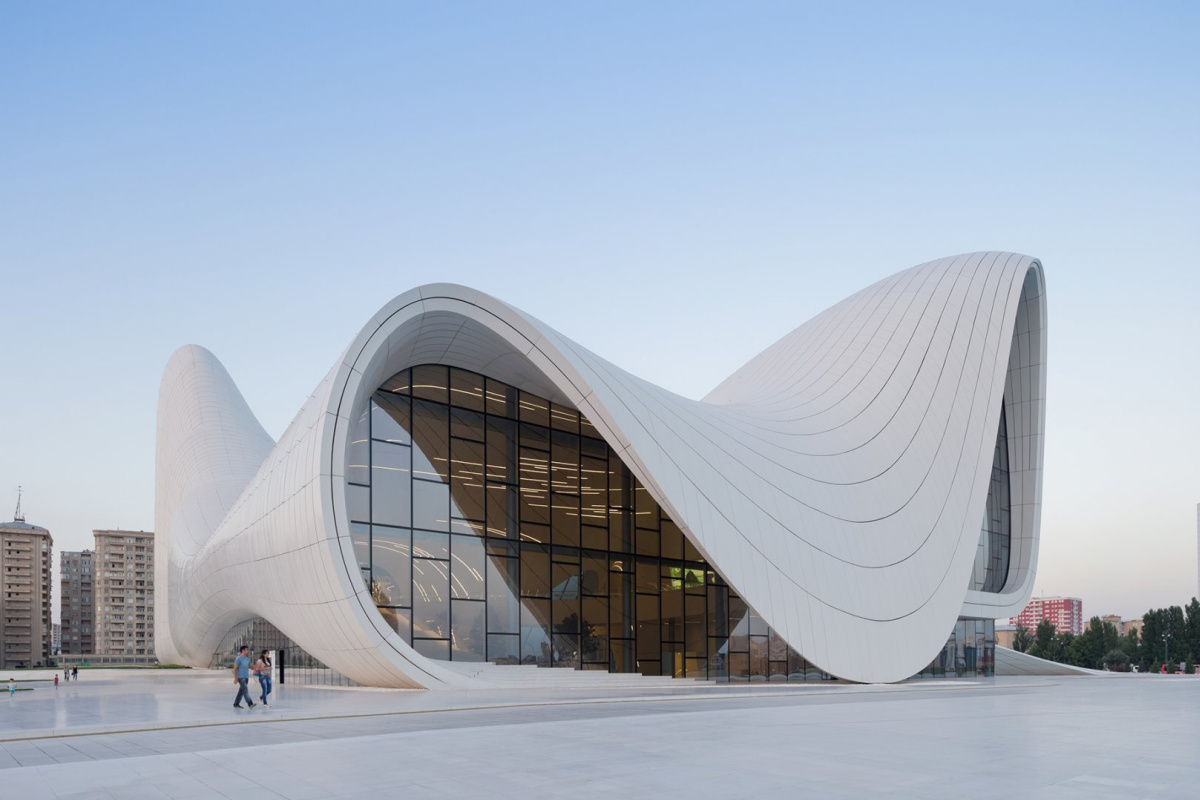log in
Enter site
Login to use Arthive functionality to the maximum
Heydar Aliyev Cultural Center
Zaha Hadid • Architecture, 2012
Description of the artwork «Heydar Aliyev Cultural Center»
Heydar Aliyev Cultural Center in Baku, named after the former president of Azerbaijan, has become a symbol of the reconstruction and transformation of the city, which began with the country's independence in 1991. Zaha Hadid was appointed architect of the center’s project after winning the competition in 2007. The building of the cultural center is one of the most striking examples of the parametric architectural style, which Hadid often referred to in her works.
The cultural center houses a museum, a 1000-seat auditorium, a multifunctional pavilion, exhibition spaces, a conference center and workshops. Each of the building's functions is represented by a “fold” on its outer surface: each of them has its own identity, but at the same time it is part of a continuous whole. When designing the center, computer systems were involved, since it was necessary to solve a number of practical and technical problems in creating a continuous space of enormous scale, taking into account future fluctuations in temperature, seismic activity, and other potential environmental and social influences.
In 2014, thanks to the project of the Heydar Aliyev Cultural Center, Zaha Hadid became the first woman architect to receive the Design of the Year award from the Design Museum. One of the judges described the Hadid building in a rather unusual way: "As innocent and sexy as Marilyn Monroe's soaring skirt." The Guardian wrote that the structure looks "Like meandering swirls of whipped cream laid in the shape of mountain peaks and spreading, forming a zigzag landscape."
The sweeping surfaces designed by Hadid were the best fit for this project, since one of the key ideas in transforming Baku was the transition from the monumental style of Soviet architecture to smoother forms. According to the architect’s idea, the appearance of the cultural center reflects Islamic culture with its continuous calligraphy and ornamental patterns that combine architecture, interior and landscape.
Talking about this project, Zaha Hadid spoke primarily about his ambitiousness and the reflection of the romance and optimism of independent Azerbaijan. However, human rights groups questioned the ethics of Hadid and criticized her for hundreds of local residents being evicted from their homes, on the site of which they built a cultural center.
Author: Evgenia Sidelnikova
The cultural center houses a museum, a 1000-seat auditorium, a multifunctional pavilion, exhibition spaces, a conference center and workshops. Each of the building's functions is represented by a “fold” on its outer surface: each of them has its own identity, but at the same time it is part of a continuous whole. When designing the center, computer systems were involved, since it was necessary to solve a number of practical and technical problems in creating a continuous space of enormous scale, taking into account future fluctuations in temperature, seismic activity, and other potential environmental and social influences.
In 2014, thanks to the project of the Heydar Aliyev Cultural Center, Zaha Hadid became the first woman architect to receive the Design of the Year award from the Design Museum. One of the judges described the Hadid building in a rather unusual way: "As innocent and sexy as Marilyn Monroe's soaring skirt." The Guardian wrote that the structure looks "Like meandering swirls of whipped cream laid in the shape of mountain peaks and spreading, forming a zigzag landscape."
The sweeping surfaces designed by Hadid were the best fit for this project, since one of the key ideas in transforming Baku was the transition from the monumental style of Soviet architecture to smoother forms. According to the architect’s idea, the appearance of the cultural center reflects Islamic culture with its continuous calligraphy and ornamental patterns that combine architecture, interior and landscape.
Talking about this project, Zaha Hadid spoke primarily about his ambitiousness and the reflection of the romance and optimism of independent Azerbaijan. However, human rights groups questioned the ethics of Hadid and criticized her for hundreds of local residents being evicted from their homes, on the site of which they built a cultural center.
Author: Evgenia Sidelnikova




